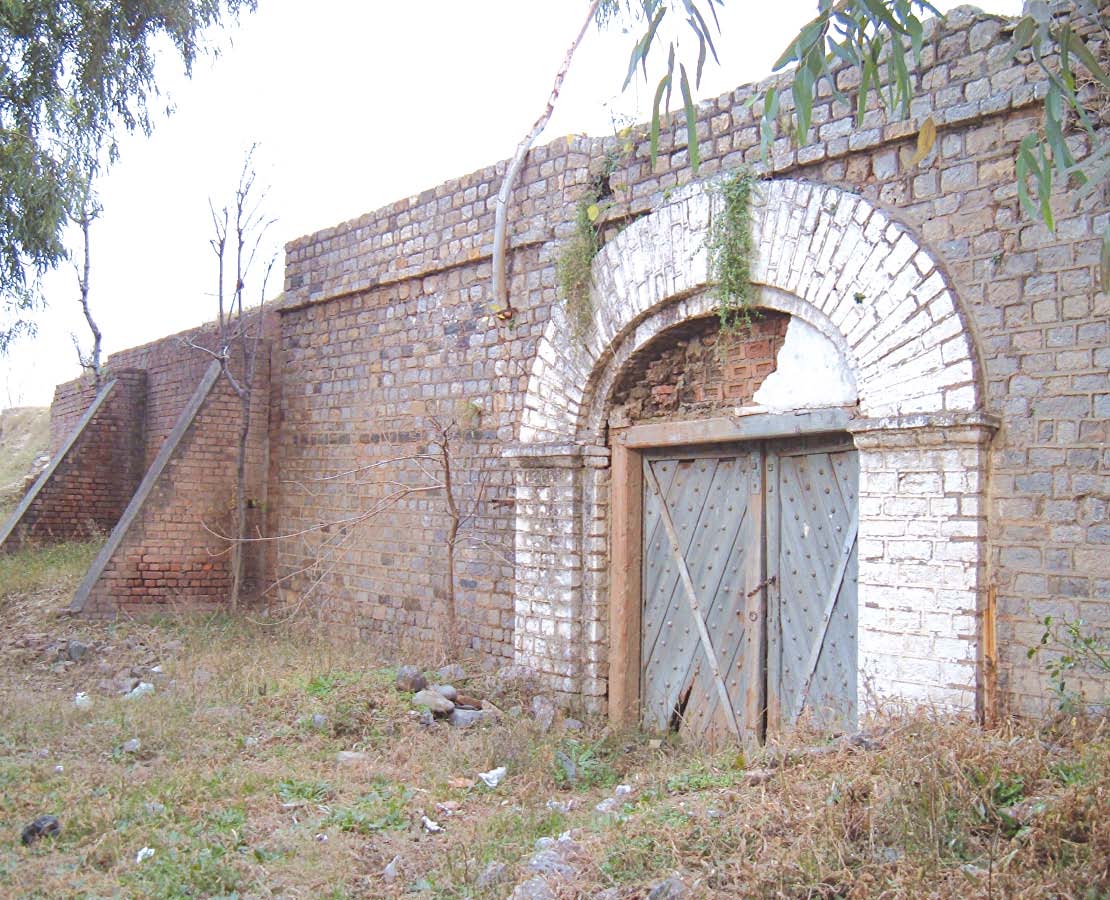
Once a symbol of military might, Fort Hari KishanGarh now stands unprotected.
The fort, which is the largest archaeological site in Haripur, has been exposed to several encroachments by the authorities themselves, while the archaeology department has turned a blind eye towards its maintenance.
The historical Sikh-era fort, spread over 35,420 square metres, was built by Sardar Hari Singh Nalwa, who was the governor of Hazara during 1822-23. The Sikhs had annexed the Kashmir Valley in 1818, from where they made their way to Hazara after facing severe resistance from local people.
The fort was encircled by a strategically-important deep trench to protect Sikh forces inside the fort. The walls of the fort, 3.6 metres thick and 14.6 metres high, and the two wooden gates represent the magnificent stonework of the Sikh rule in Hazara.
The walls and gates are still standing even though no maintenance work has been carried out in the fort for almost 200 years.
According to the Hazara Gazetteer 1883-84, the fort was founded on the advice of Mukadam Musharraf, a Gujjar tribal chief, to maintain Sikh rule in Hazara. The fort was used as a base and was considered a key place for defense in Hazara.
It also served as the District Headquarters for the British rulers between 1849 and 1853, before Major James Abbott relocated the headquarters to Abbottabad.
After the relocation of the headquarters, Abbottabad, previously known as “Maidan-i-Rash”, was named after the major for his services. The fort was taken over by the police and revenue departments.
The west side of the fort is now occupied by City Police Station, police lines and an investigation department, while the revenue department has taken over another part of the historical fort. The revenue and police departments have also built their own infrastructure on the premises of the fort, quite literally defacing the monument and its grounds.
The Tehsil Municipal Administration has also encroached upon the fort’s land and constructed an overhead water tank.
Part of the historical site has turned into a dumping ground for solid waste, while influential people have diverted the drains into the fort’s trench.
In order to preserve the cultural heritage of Fort Hari KishanGarh, former minister of state for finance Omar Ayub Khan had approved Rs20 million for the construction of a family park. However, Member National Assembly Sardar Mushtaq Khan, who happens to be one of the descendants of Mukadam Musharraf, reportedly hindered the project.
Mushtaq also promised to carry out maintenance work on the ancient fort. However, his preservation project is yet to materialise.
On the request of Hazara University administration, late Iftikhar Ahmed Khan, who was the Tehsil Nazim then, donated 2,300 square metres of land near the fort for the construction of a museum.
The university administration allocated Rs500,000 for the project and started constructing the boundary wall; the museum was to be completed in two years.
However the administration was sued with the objection that the land was already allotted for the construction of a primary school for girls, and the project was suspended for an indefinite period.
Published in The Express Tribune, July 30th, 2011.



1728524080-0/Diddy-(2)1728524080-0-165x106.webp)



















COMMENTS
Comments are moderated and generally will be posted if they are on-topic and not abusive.
For more information, please see our Comments FAQ